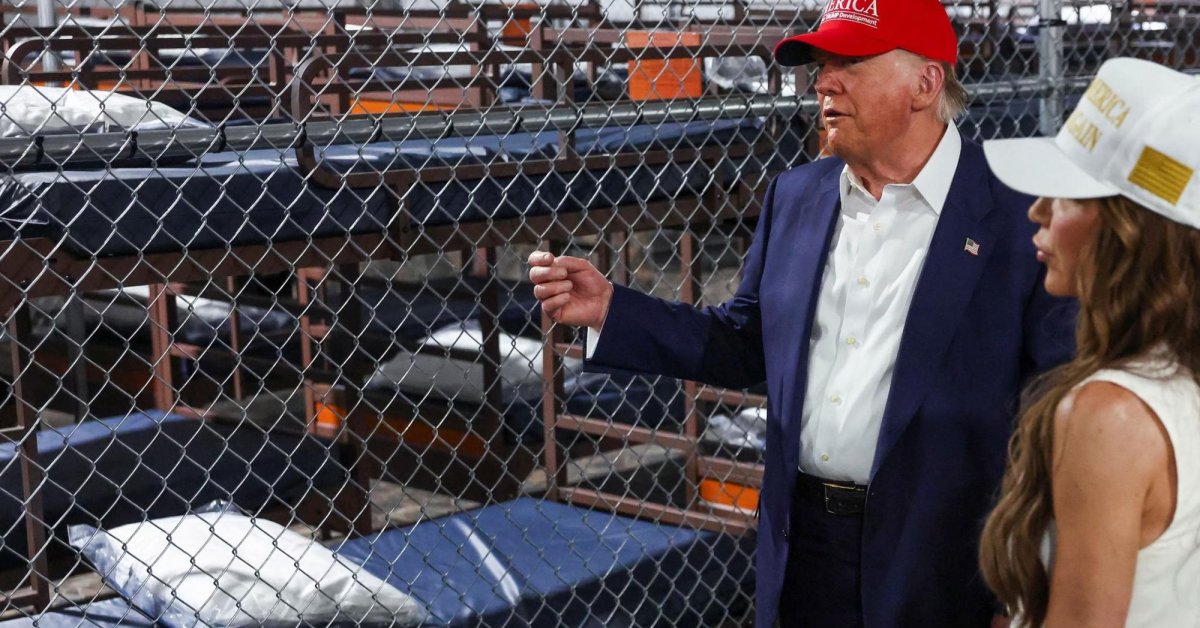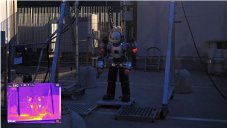All About Florida’s Alligator Alcatraz: A Smart Move for Immigration Control
Marcus Aurelius - Jul 02, 2025

Alligator Alcatraz isn’t just a detention center—it’s Florida throwing its weight behind Trump’s border security mission.
- The TikTok Tug-of-War: Trump’s 2025 Moves and What’s Next
- Facebook Suspends Donald Trump’s Account Indefinitely
- Donald Trump Called India 'Filthy,' Gets Roasted On Twitter
Florida’s stepping up big time with a new detention spot called “Alligator Alcatraz,” backing President Donald Trump’s push to get tough on immigration. Set up by Governor Ron DeSantis and Attorney General James Uthmeier, this place in the Everglades is a clever way to handle the immigration situation. It’s at the Dade-Collier Training and Transition Airport in Ochopee, Florida, and it’s ready to play a major role in Trump’s deportation plans. Here’s the rundown on why this place is a big deal.

A Strategic Location for Maximum Security
Alligator Alcatraz is out in the middle of nowhere at a 39-square-mile airstrip in the Big Cypress National Preserve, about 50 miles west of Miami. It’s surrounded by the Everglades’ swamps, full of alligators, pythons, and mosquitoes, making it a natural lockup. Uthmeier nailed it when he said, “You don’t need much of a fence. If someone gets out, it’s just them and the wildlife.” The swamp does the heavy lifting for security, saving money while keeping things tight. The old Dade-Collier Airport, built in the 1960s for a bigger project that got scrapped, has a 10,500-foot runway perfect for flying detainees in and out without bothering nearby towns. Using this forgotten spot is a smart move that fits Trump’s style of getting things done.

Rapid Construction and Federal Support
What’s wild is how fast they got Alligator Alcatraz up and running—just eight days! Florida pulled it off by using emergency powers to skip the usual red tape, turning the site into a working detention center with tents, FEMA trailers, and temporary buildings. The feds, led by Department of Homeland Security Secretary Kristi Noem, are all in, funding it through FEMA’s Shelter and Services Program. Noem called it a “cheap and smart” way to handle more detainees. It’ll cost about $450 million a year to run, but federal cash keeps Florida taxpayers off the hook. Trump checked it out on July 1, 2025, and said it’s “top-notch and well-executed,” even suggesting other states copy it.
A Force Multiplier for Deportation Efforts
Alligator Alcatraz can hold up to 5,000 people, starting with 3,000 beds in dorms surrounded by fences and barbed wire. It’s got AC, medical care, a rec yard, and access to lawyers and clergy, so it’s secure but not inhumane. Florida’s focusing on detaining “criminal aliens”—folks with deportation orders or rap sheets—lining up with Trump’s plan to prioritize public safety threats. DHS says 70% of ICE arrests are people with criminal records. The remote spot also scares off would-be border crossers, as DeSantis put it: “Why deal with Alligator Alcatraz when you can just leave?” The runway makes deportations quick, with flights straight to other countries, easing the load on local cops and boosting Trump’s goal to double detention space to 100,000 beds nationwide.
Addressing Overcrowding and Supporting Local Communities
With ICE holding 59,000 detainees—way over capacity—Alligator Alcatraz helps take the pressure off. It gives a dedicated spot for migrants nabbed in Florida and elsewhere, freeing up local jails for other cases. Florida’s already making moves, with over 1,100 arrests in a week alongside federal agents. The setup also brings jobs through private contractors and the Florida National Guard, who helped build and secure it. Federal funding means it’s not draining state budgets, and DeSantis is even eyeing another site at Camp Blanding near Jacksonville for 2,000 more beds, showing Florida’s all-in on this.
Responding to Critics with Confidence
Some environmentalists, Democrats, and Native American groups aren’t thrilled, worrying about the Everglades or nearby tribal lands. DeSantis and Uthmeier aren’t sweating it, calling the complaints overblown. The governor says the facility won’t harm the environment, thanks to its self-contained setup and temporary buildings. Florida’s track record on Everglades restoration backs that up. Critics like Miami-Dade Mayor Daniella Levine Cava want more reviews, but the state’s emergency powers and federal support keep things moving. Some grumble about the heat and wildlife, but with 200+ cameras, 400 staff, and solid amenities, the place is safe and functional. The tough setting just adds to its edge as a deterrent, which is exactly what Trump’s aiming for.
A Model for the Nation
When Trump visited on July 1, 2025, with DeSantis and Noem, he called Alligator Alcatraz a potential template for other states, even joking it’s “as good as the real Alcatraz.” Its quick build, smart location, and low cost make it a standout. Florida’s already planning to expand, and other states might follow suit. It’s a clear win for Trump’s border security push, showing how states can team up with the feds to get results.
Conclusion
Alligator Alcatraz isn’t just a detention center—it’s Florida throwing its weight behind Trump’s border security mission. Using a remote, swamp-surrounded spot, the state’s built a secure, efficient facility that tackles overcrowding, discourages illegal crossings, and speeds up deportations. Despite some pushback, its fast setup, federal backing, and focus on safety make it a solid model. As Trump and DeSantis keep the pressure on, Alligator Alcatraz shows what’s possible when you take action to protect the country.
Featured Stories

ICT News - Dec 25, 2025
The Visibility Concentration Effect: Why Half the Web Isn’t Qualified Anymore

ICT News - Jul 05, 2025
Windows 11 is Now the Most Popular Desktop OS in the World

ICT News - Jun 25, 2025
AI Intimidation Tactics: CEOs Turn Flawed Technology Into Employee Fear Machine

ICT News - Jun 24, 2025
Tesla Robotaxi Finally Hits the Streets: $4.20 Rides That'll Make You Hold Your...

ICT News - Jun 24, 2025
World's First Flying Humanoid Robot Takes Flight

ICT News - Jun 24, 2025
When Closed Source Met Open Source: Bill Gates Finally Meets Linus Torvalds After...

Gadgets - Jun 23, 2025
COLORFUL SMART 900 AI Mini PC: Compact Power for Content Creation

ICT News - Jun 22, 2025
Neuralink Telepathy Chip Enables Quadriplegic Rob Greiner to Control Games with...

ICT News - Jun 20, 2025
Tesla vs Zoox vs Waymo: Who would win?

ICT News - Jun 19, 2025
Comments
Sort by Newest | Popular